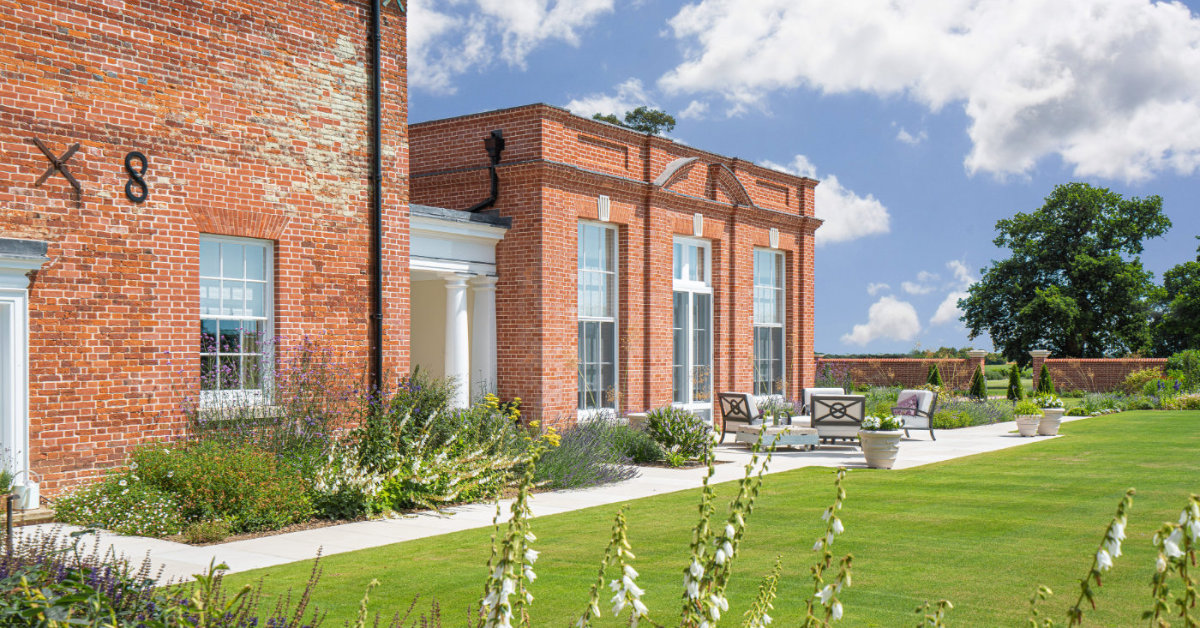House in Suffolk
The house in Suffolk was an alteration and extension to a modern classical house. The original home was a five bay block with large over hanging eaves, built in the early 2000s.
In 2017, Francis Terry was appointed by a new client to extend and improve the property. This presented a rare opportunity to revisit the earlier design, elevate the architecture, and create a more resolved and site-responsive composition.
The house is constructed from buff-coloured brick, a material commonly found in Georgian architecture throughout Suffolk. This material palette was established in the original design and has been continued in the extensions and alterations, helping to ensure visual continuity and local authenticity.
The redesign aimed to strengthen the classical language of the original house while introducing a greater sense of balance and proportion. Previously, a single-storey conservatory on one side and a screen wall on the other disrupted the intended symmetry of the building.
One of the key interventions by Francis Terry was to address the roof, which in the original design featured large overhanging eaves with a shallow pitch, compromising the usable living space, and a lack of windows, denying light and views across the wider landscape. Francis replaced this with a parapet and a new, steeper pitched roof punctuated by dormer windows. This alteration created a more pleasing and balanced composition while significantly improving the attic accommodation. The new roof retained the use of slate to match the original, maintaining coherence across old and new elements.
Within the original house, the whole interior was redesigned to give the property a unified composition with the new wings. This included architraves, cornices and other joinery mouldings. The original dogleg staircase was replaced with a sweeping flight, following Georgian precedents.
The new extensions re-establish a more ordered and harmonious composition. Designed to be symmetrical and subservient in height to the main house, the wings step gently down into the landscape, creating a soft transition between the main block and the surrounding garden.
Situated on rising ground with panoramic views across the surrounding countryside, the site offered the opportunity to make a bolder architectural statement. The extended house now reads as a baroque composition, with arms reaching out toward the landscape.
To the west side of the house is a pool with a pool house also by Francis Terry. This is designed as a picturesque folly in the tradition of garden buildings for country houses. The front façade is a Tuscan order with a small central pediment. Further Tuscan columns frame the pool space on the side of the house, making two sides of an architectural exterior ‘room’.
Francis Terry’s connection to the wider Suffolk region informed the practice’s thoughtful approach. Having grown up in the surrounding countryside, he has long held an understanding and appreciation of the area’s landscape character and architectural traditions. That knowledge is reflected in every aspect of the redesign. The finished house sits proudly within its landscape, offering a respectful yet distinctive contribution to the architectural heritage of the region, and serving as a testament to the enduring value of classical architecture in a contemporary context.














